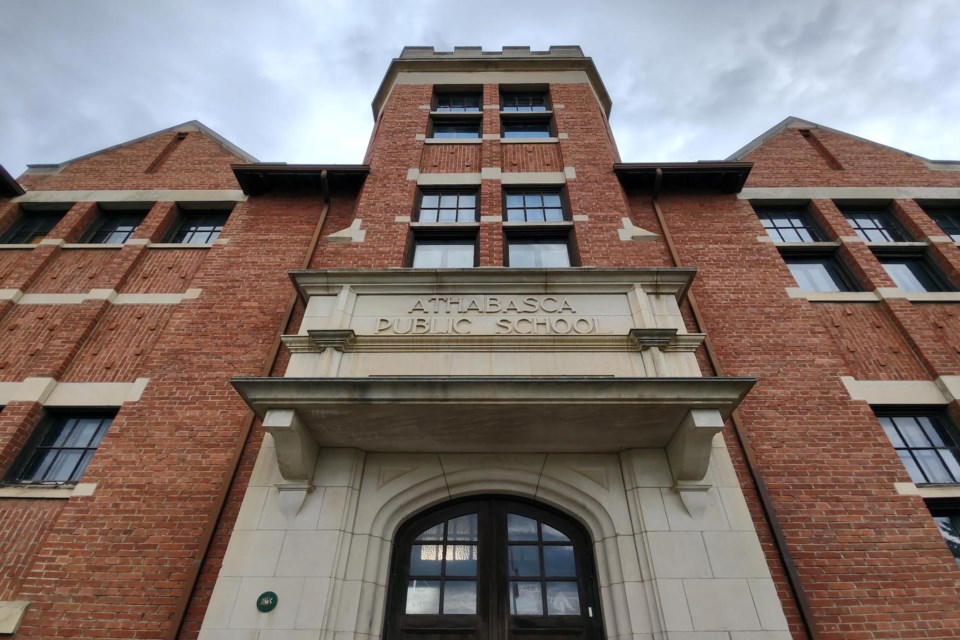ATHABASCA – It has become known as an impressive piece of the Athabasca skyline, at least when looking from certain angles, in certain areas of town, and its importance as a historical landmark to the region is not lost on locals.
Not only does the Old Brick School, as it is known to residents, have a new sign placed in front earlier this year by the Athabasca Heritage Society to explain its significance, but a sub-committee made up of members from the heritage society and town officials was also formed to oversee its future.
The iconic brick schoolhouse was built in 1914 to accommodate its 118 students that attended upon the opening. With a grant of just $40,000, the four-classroom building was completed over the winter of 1913-14, and added to over the years as the number of students in the region grew.
What was originally the basement, which was used for the children to play in during their breaks, was turned into classrooms as the population of the town increased. During the Second World War, an addition known as the “Stucco school” was built, which is where the Alice B. Donahue Library and Archives reside today.
As the mid-1950s approached the school had amassed 450 students that filled 14 classrooms and the gymnasium, which has since been converted into the Nancy Applebee Theatre. Due to the massive post-war growth in Athabasca, the original Edwin Parr Composite School was built in the 50s to accommodate high school students, and by 1966 when the new elementary school was built, the Old Brick School shut its doors after more than 50 years of use.
In 1976 what had been seen as a historical piece of Athabasca became a historical piece for all of Alberta as well when it was designated as an Alberta Registered Historic Resource. Since then, the building has served as office space for Family and Community Support Services in the past and continues to house the Athabasca Pottery Club in the basement rooms.
While some of the building is still in its original state, much of it has been renovated since its closure as a school.
“Pony walls were put up to subdivide the large classrooms into offices with FCSS,” said Margaret Anderson, a member of the Brick School sub-committee when discussing future plans for the building. “The classrooms were subdivided for their use, but they're just pony walls, so I think what we're looking at is taking that kind of thing down.”
Since the sub-committee was formed earlier this year, members have been going through surveys and budgets as the work out what to do with the school going forward. They have hopes of using their allotted budget and some government grants in order to turn the building into a space that everyone can enjoy.
“The people who replied to the survey in Athabasca indicated that they thought it might be good to have breakout space, or the theatre and maybe a bistro, and that kind of thing,” Anderson said. “The committee will take advice from the people of Athabasca on the future use of the building.”
All in all, it is through keeping historical buildings such as these alive that keeps the history of the community alive, and accessible.
“We want realistic possibilities so at the moment, nothing is set in stone. We have a budget that we're working with, and the immediate priority is to fill the restoration requirements that were identified,” Anderson said.



